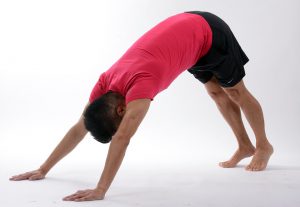
If cyclists wish to avoid going through common bicycle injuries, they need to think about doing some cross training.
A cyclist should have a good combination of strength, speed, and endurance training, as well as some flexibility training in order to get the most out of his cycling, especially if he wants to avoid common bicycle injuries and win races at the same time.
What Muscles Are Involved When It Comes To Cycling?
The major muscles involved in cycling include:
- The much-overlooked core muscles, which are important for maintaining balance and power. The rectus abdominis, internal and external obliques, hip flexors and spinal erectors are all super important when it comes to preventing common bicycle injuries.
- The leg muscles, including quadriceps, hamstrings, gluteus muscles, as well as anterior tibialis, gastrocnemius, and soleus, are all important when it comes to the power that your legs can generate for cycling.
- The muscles of the arms and shoulders are very important to maintain good support on the bike when leaning forward; the deltoids, biceps, and triceps, and the muscles of the hand, wrist, and forearm are all muscles to think about here.
Weakness and imbalance in any of the above muscles can lead to injuries for cyclists especially. It is essential that any serious cyclist has a good strengthening and conditioning program, and special attention should also be focused on stretching the muscles after use to make sure that the muscles also remain flexible, especially the overused muscles in the legs and butt.
Most Common Bicycle Injuries
Here is a list of all the most common bicycle injuries that cyclists have. This is why it is essential that cyclists work on perfecting their form and watching they don’t place excessive wear on their joints and bones.
Cyclists involved in accidents also may be subject to fractures and even brain injury.
Knee Bursitis
Bursitis is a condition where the bursa, which is a fluid-filled sac that cushions the tendons and ligaments where they cross the bone, becomes inflamed and irritated. This leads to swelling and redness in the area. In worst cases, the bursa can rupture and thus won’t be able to cushion where it is supposed to.
Obviously, repetitive flexion and extension of the knee cause more irritation.
The pain will subside with rest and the inflammation usually responds well to ice.
Doing flexibility training during rehabilitation helps to reduce the chances of the bursa coming back.
Lower Back Pain
The riding position on the bike, especially during road racing, can cause pain in the lower back due to poor posture and/or fatigue. The muscles in the lower back can become tired during a long session of cycling and extended time in the same position in the saddle may lead to the muscles becoming tight. This pain usually subsides with rest and stretching. Sometimes, pressure on the intervertebral discs may require medical help to relieve.
ePlantar Fasciitis
The plantar fascia is a strong ligamentous band that runs along the bottom of the foot, from the heel to the ball of the foot. This band supports the arch of the foot and is under strain when the foot is bearing weight. When the foot supinates, such as when pedaling a bike, this places additional stress on this fascia.
Plantar fasciitis is a condition that occurs when the fascia becomes inflamed and painful. Rest is the best medicine for this condition. Ice and massage can also help.
Iliotibial Band Syndrome
This thick tendon-like band is part of another muscle called the fascia latae. It passes down the outside of the thigh and goes in just below the knee.
Sometimes this band becomes stiff and tight and this causes the tendon to pull the knee joint out of alignment and rub against the outside of the knee which causes inflammation and pain.
To avoid this problem it is best to keep working on your flexibility in the quadriceps and the hips.
Patellar Tendinitis
This condition is caused by incorrect pedaling form or overuse. This tendon which is found in the foot rubs over the bone and causes inflammation that aggravates the condition leading to inflammation and pain.
The best treatment here is rest and ice.
Strained Muscles
Over-stretching or working against extreme loads can cause overtraining of the muscles. The fibers in the muscles tear causing bruising and inflammation within the muscle. Stiffness then sets in due to scarring.
Strained muscles can range from severe involving a large number of fibers and large areas of muscle to minor. Rest, ice and anti-inflammatory medication are used to treat muscles strains.
Fractures
A fracture is when the bone actually breaks, whether partial or complete.
The larger the bone, the greater the force required to fracture it. Fractures normally happen more commonly with high-speed cyclists when they fall from their bikes or have collisions.
Fractures require immediate medical attention and need to be immobilized to prevent further injury. Four to six weeks recovery time is usually needed with large bone fractures normally requiring more time.
How To Avoid Common Bicycle Injuries
Here are some great tips on how to avoid common bicycle injuries.
-
- Make sure that you always warm up before your ride.
- Always cool down and stretch after your ride.
- Get those muscles strong and conditioned. Stronger muscles are able to handle the stresses of long
bike rides better than weaker ones can.
- Wear a helmet during your rides, as this is important to avoid head injuries if involved in an accident.
- Get a good flexibility program going so that you reduce stress on your muscles while training.
- Learn proper cycling technique and get your form right, as a lot of injuries are caused by incorrect form.
- Keeping your bicycle in top condition also goes a long way to preventing accidents.
The Best Cycling Stretches
Stretching is one of the most underrated techniques, but it can improve athletic performance, prevent injuries and also help with recovering from injuries.
Never think that leaving out stretching from your routine is a good idea because it is very effective.
Stretching should be an integral part of any cycling program, or for that matter any sporting program.
With cycling, one spends so long in the same position and this is the reason why stretching out those muscles is so beneficial and important.
Here are some great stretches for cyclists. Make sure you hold each stretch for at least 30 seconds.
Quad Stretch
Lie flat on your tummy. Keep your hips flat on the floor while bending your knee and grabbing your foot from behind with the same hand. You can lift the thigh off of the floor if you need more of a stretch.
Butt Stretch
Lie on your back and bend your knees hip distance apart. Place one foot on your other knee and lift the underneath leg grabbing it with both hands around your thigh. You should feel the stretch going under your lifted thigh and into your butt. Make sure to keep your hips on the floor for a maximum stretch.
Achilles Stretch
Stand on a raised object or on a step and place the ball of one foot on the edge of the step. Bend your knee slightly and let your heel drop towards the ground. Do a few with each foot and hold the position each time.
Downward Facing Dog

Downward Facing Dog
This one works very well to stretch the entire body. Aim to get your weight off of your wrists and into your legs. Your back should be as flat as possible. Try to get your heels as close to the floor as possible.
To find more great stretches that you can use in your conditioning program, you would do well to purchase a copy of the Ultimate Guide to Stretching and Flexibility.
This includes 135 clear photographs and 44 videos demonstrations of unique stretching exercises for every major muscle group in your body.
Between the DVD and the handbook, you will see step by step how to do each stretch correctly.
You will also learn critical rules for safe stretching and what the benefits of flexibility will mean for you.
The DVD also includes 3 customized stretching routines (8 minutes each) for the Upper Body; the Lower Body; and the Neck, Back & Core, plus a bonus CD-ROM that allows you to print out over 80 stretching routines that you can take with you wherever you go.
Click here to grab some free routines right now.

